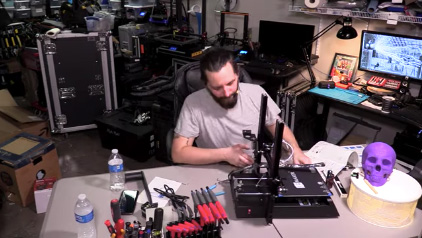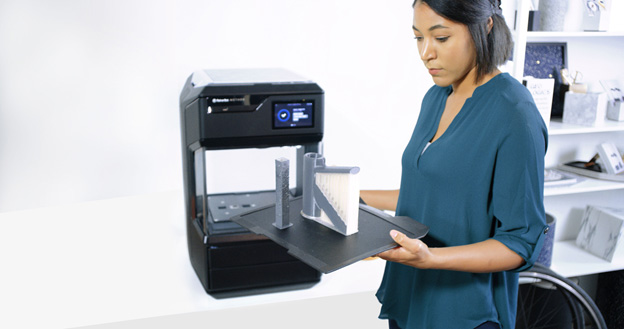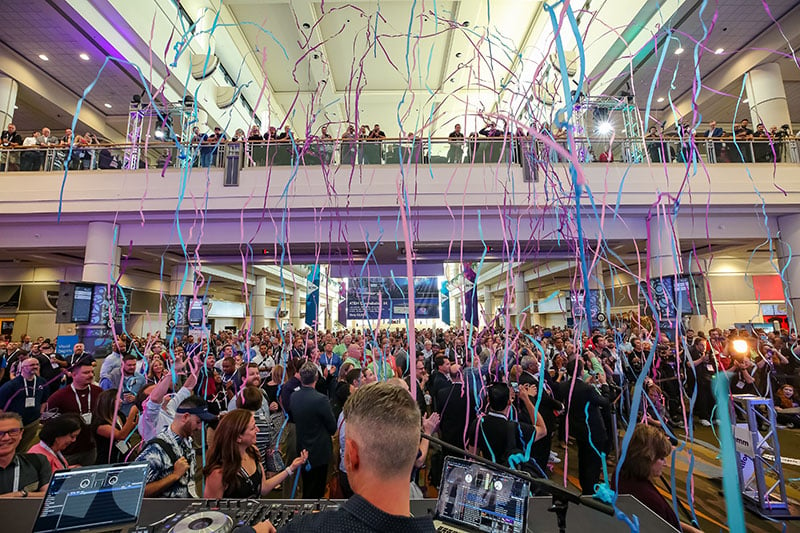What Could 3D Printing Add To Your Business?
For those in the AV business whose career story begins with, “I was always a tinkerer, I was always taking things apart and figuring out how they worked,” 3D printing is the perfect new opportunity. Many have heard of 3D printing, or “additive manufacturing,” as it’s more professionally known, and maybe they’ve used it for rapid prototyping in their R&D department.
But now is the time to look around the workshop or garage or home office and wonder, “What still needs to be built?” Because 3D printing has definitely entered the realm of final products, not just mock-ups (though of course it’s still incredibly essential there, too).
New materials (including carbon fiber, metals and flexible plastics), new printer technology that allows for fine-tuned pigmentation of 3D output, new techniques and new capabilities in scale are creating new opportunities to expand business offerings.
 Brian Dickson has experimented with many 3D printers for his Film Play projects. Photo courtesy Film Play.
Brian Dickson has experimented with many 3D printers for his Film Play projects. Photo courtesy Film Play.
Many technologists liken the current state of 3D printers to the earliest models of personal computers. “It’s like the first Apple computer, which you actually had to assemble yourself. We are about a half a step above that in a timeline with 3D printing,” says Brian Dickson, Owner of Film Play. “But it’s really easy to see where it could go. Within our lifetime, this will be as big a revolution as the internal combustion engine.”
Dickson and many others in the AV and experience design industry have been experimenting with all sorts of one-off 3D printed objects for either functional or decorative purposes in the studio and on live productions. Last-minute quick fixes like camera jigs or makeshift teleprompter holders can be printed up and wedged into place before the day is over. Or some experience design firms go further and use 3D printing to create specialized tools that help robots paint pictures or fabricate entire interactive worlds.
What Should We Build Next?
So, really, what can be done with with 3D printing? Or really, the question should be, what do you want to do with 3D printing? The answer is “create your own instant innovation.” In this strange moment of extreme pause, it might be time to take out that list of things you always wish you had for an install or a live production, and design and build them as products.
It’s that sort of mindset that prompted Dickson to develop a carbon-fiber camera battery case and customizable stands for the Elgato Stream Deck, which is used on more and more projects today. You can even print in pigments to match your clients’ branding. Or you can create a translucent illuminated logo for an experience design, like Film Play did for Amazon’s “Ride with Alexa” feature at CES 2020.
It’s just a matter of selecting the printer (or printers, plural — gearheads will love the strata of options they might need to get into here), materials and techniques to build your dream 3D printing lab. It may be worth the investment, since your next generation of engineers, techs and creative technologists will likely expect to have a 3D printing option in your shop.
Take it from Easton LaChappelle, Founder and CEO of Unlimited Tomorrow, a new company that creates ultra-customized, affordable, robotic prosthetics. LaChappelle got his first 3D printer when he was 15 years old, and shortly thereafter, he was creating and sharing designs for robotic prosthetics with the vast open-source community that has evolved around additive manufacturing. Recalling those early days, he says, “Essentially, it was a box that could make anything I could imagine as long as I could design it. That changes your mindset about what’s possible. You can start building all the things you know need to exist.”
Start Building
 With so many output types, the 3D printer should be considered a platform rather than just a specific tool. Photo courtesy of Makerbot.
With so many output types, the 3D printer should be considered a platform rather than just a specific tool. Photo courtesy of Makerbot.
New materials have arrived in the additive manufacturing world. “You’re no longer limited to a very narrow set of materials that are mostly suited for creating static models,” explains Felipe Castañeda, Creative Director and an Industrial Designer with MakerBot. “Now you have flexible materials, you have super-strong materials and you have composite materials that will give you different opportunities to test ideas.”
With so many output types, the 3D printer should be considered a platform rather than just a specific tool. The same printer that creates solid objects can create a series of pieces and gears to make a robotic hand, and then the material can be changed to enhance the fingers’ grip by printing the jointed extensions with a flexible plastic.
Level Up
One printer can be a platform, but of course there are different levels of printers. On the lower end, there are those that can create more rough-hewn pieces out of a limited selection of filaments. Then, moving up the chain, you can get all the way into the massive printers that can produce airplane wings, or incredibly precise machines that can produce pieces on a nano level.
At Unlimited Tomorrow, LaChappelle’s personal 3D printing experience has evolved from the first build-it-yourself MakerBot models, through to the Fused Deposition Modeling (FDM) and Stereolithography (SLA) printers that can be found today. Now his company is using a specialized Multi Jet Fusion (MJF) printer from Hewlett-Packard, which has more than 40,000 jets that can produce finely wrought details and precise pigmentation.
“What you get is very, very strong parts in full color, and up until now, that was unheard of,” LaChappelle says. “And for our application, which is prosthetics, we can create these robotic hands that are durable — you can go play football with them, they’re childproof. But they look natural. They match skin-tone, they have veins and fingernails and humanlike elements.”
The 3D printer used by Unlimited Tomorrow is on the higher end, but it’s still priced at a level that makes it possible for startups like LaChappelle’s to innovate and create new products. “Typically, 3D printing was meant really for prototyping,” he notes, but just recently, within the last 12 months, he adds, “we have crossed into the layer where we can actually now 3D print something and use it as a final product or final part.”
Evolve the Classroom
Within the remote workplace and education environments, the networked option for 3D printers allows for teams to share and test designs as physical objects.
In some ways, the remote classroom setup puts a limit on the amount of opportunities students have for hands-on learning. Generally, a 3D printer is much more engaging to use in person. But MakerBot’s networked printers are helping students to connect and create tools to help in the current pandemic.
 Students of all ages are using 3D printers, and across many subjects. Photo courtesy of Makerbot.
Students of all ages are using 3D printers, and across many subjects. Photo courtesy of Makerbot.
“Students have been wanting to help in the crisis,” says Andrea Zermeño, Education Manger with MakerBot. “They've been wanting to create designs, whether it's a face mask or a device to help people open doors — they have the know-how for 3D printing and the ways that it can be utilized to to create things to help in a quick manner.”
Students of all ages are using 3D printers, and across many subjects, Castañeda adds: “You’re no longer buying one book for biology, chemistry or math, but you're buying a tool that can help you play with biology, chemistry and math — depending on what you're trying to prototype.”
Customize Your Project
In terms of event and experience design, the customizable aspects of 3D printing can really make an impact. Particularly in applications where formerly production was limited to large quantities. “If you are having one exhibit in a museum or a venue, then you might be better off with a 3D printer, which allows you to flexibly change the setup without having to make a massive order or a defined quantity,” Castañeda says.
The 3D printing possibilities are expanding, and now is the perfect time to try to make something that could solve problems or change the way things are done. It might start at home during quarantine and then expand into professional applications. “Now we have the ability to actually fix our own things around the house,” Zermeño says, “And we can grow from that. We see how we can use those methods, those applications outside of the house, in the office, in the school, in our community.”
Watch Next: TIDE Generator Podcast: Designing with 3D Printing
Looking at all the angles from education, production and experience design, TIDE Generator explores new possibilities in materials and interdisciplinary design collaborations through what’s new in 3D printing, how it’s changing design and production, and what's ahead in terms of new and cool uses for interactive experiences.




.jpg?sfvrsn=3d19e700_3)

